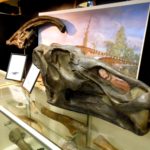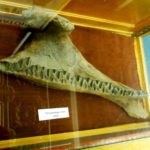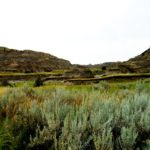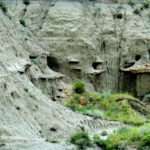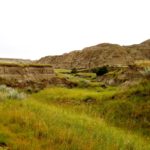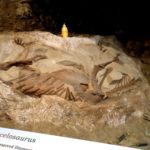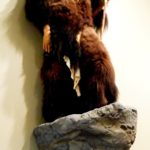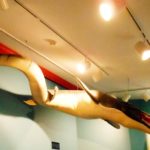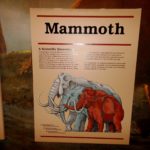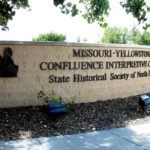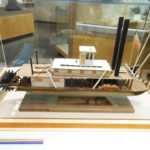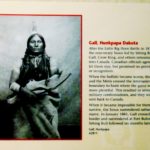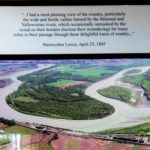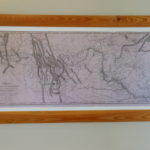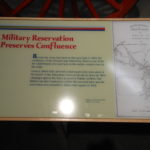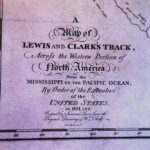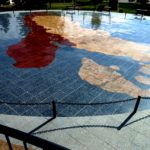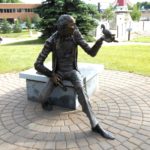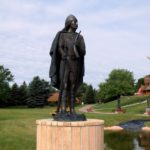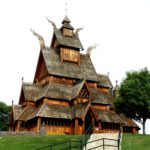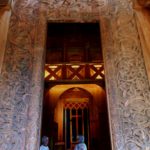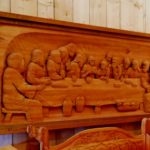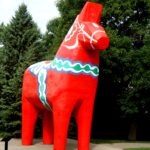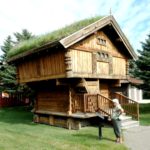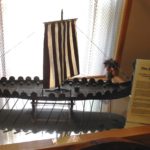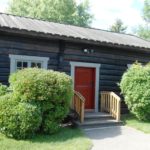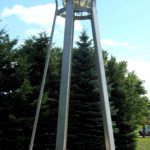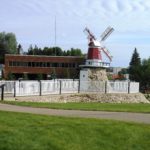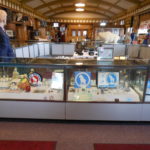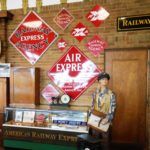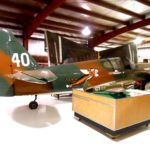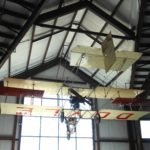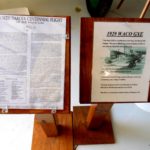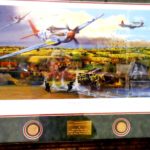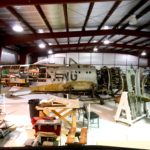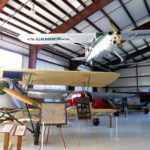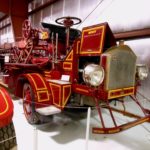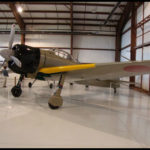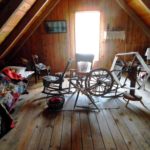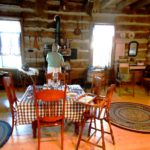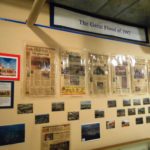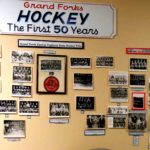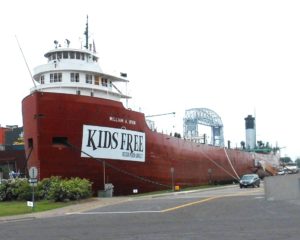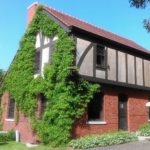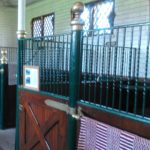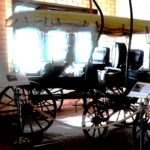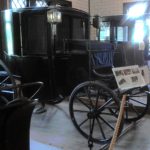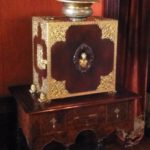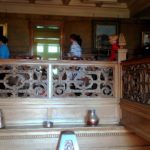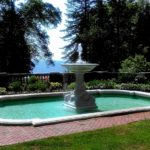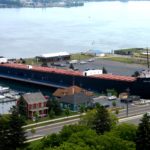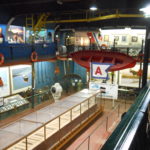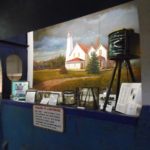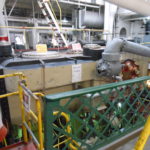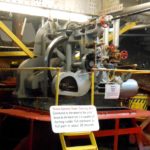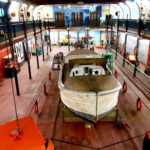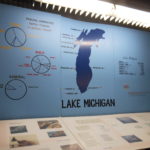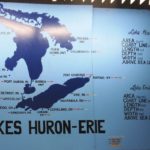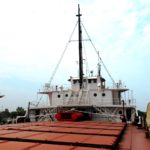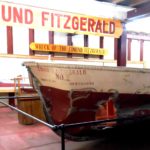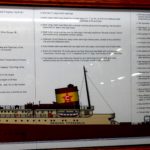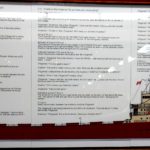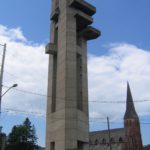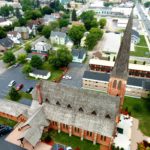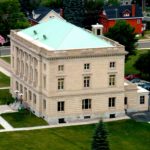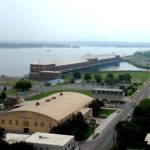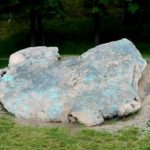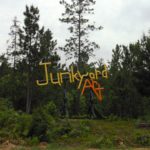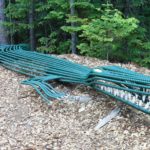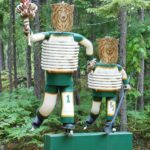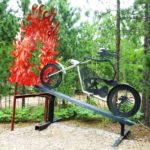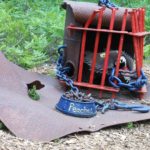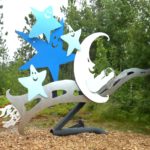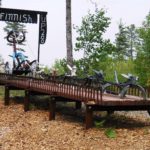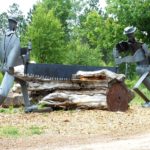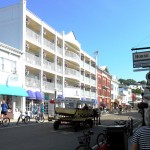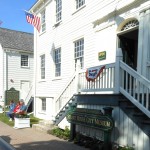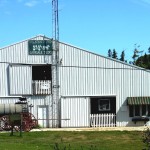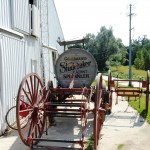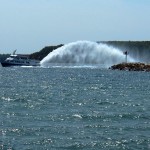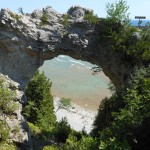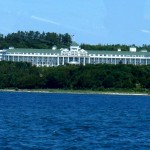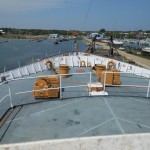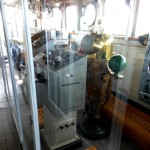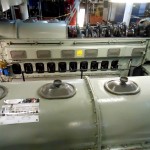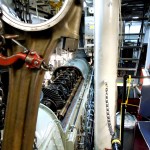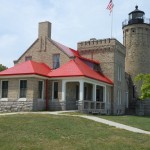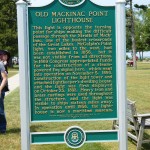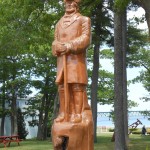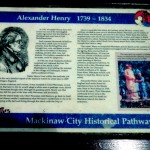Previous journeys have put us on east-west routes across lower sections of North Dakota. Since we were up near the top of the Union anyway, we decided to try the northernmost path, Rte 2. We took it out of Duluth and stopped first in Grand Forks, ND. Actually we didn’t! We stopped just short at East Grand Forks, Minnesota, just across the Red River. There, the Red River State Recreation Area provided full hookup pull-thru sites spread widely through the park. Not cheap, and with a daily use fee on top of it. But spacious, comfortable and efficient.
We spent most of our time in Grand Forks ND itself, but we took in a fascinating experience in East: the Northern Lights Railroad Museum. Originally started as a model railroading club in the 1980’s, it has grown to interpret the history of railroading in the Northern Great Plains. It’s housed in a replica train depot built by volunteers after the 1997 flood (much more on that later) and has been expanded since. Clearly a work in progress, it houses two model railroads, one in HO gauge depicting the Great Plains and the other in N gauge, depicting the Mid-West logging industry. Some of the tiny HO details are outstanding, such as a boy scout troop and a prison work gang, both shown below.
-

-
Introduction
-
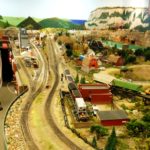
-
One magnificent view
-
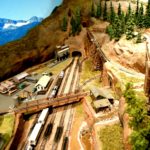
-
Another view…
-

-
Prisoner work crew.
-

-
The Boy Scout troop…
-
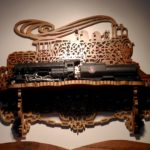
-
Woodcraft Artwork
The Red River, a.k.a. the Red River of the North, forms almost the entire border between Minnesota and North Dakota. Its source is at Wahpeton, ND, approximately 50 miles SSE of Fargo, and it passes Fargo and Grand Forks on its way a little over 300 miles to Lake Winnipeg, Manitoba, just north of its capitol. Yes, it’s the river made famous by the song, Red River Valley, which probably originated in Manitoba around 1870 and has many different titles and sets of lyrics!
The “RRN” is best known for flooding. You have listened more than once to The Weather Channel’s intimate tracking of its flood stages, which began in the paleo era but have caused devastation more recently in 1997, 2009 and 2011. Of those three, the first was the worst in this area, in large part because the major metropolises along its route were better prepared to fight the onslaught after the 1997 devastation.
In 1997, water spread up to 3 miles on either side of its course, causing 100% of E. Grand Forks and 75% of Grand Forks to be evacuated for weeks. After the wipe-out, Grand Forks built a series of retractable flood walls. All of the homes on Riverside Drive and most of those on picturesque Lewis Boulevard were demolished or relocated to make room for the protective system. Careful attention to detail allowed the Riverside Historic District to be placed on the National Register in 2007. Numerous architectures, including Queen Anne, Bungalow, Mechanic’s Cottage, Tudor, Dutch Colonial and American Craftsman are represented in Riverside. Numerous turn of the century commercial, consumer and government structures form another impressive tour.
The Grand Forks project worked. 2009 and 2011 produced the third and fourth highest floods in the city’s history, with no significant damage in the area. Both of those wreaked more havoc north, in Fargo and in Manitoba.
The Grand Forks County Historical Society was established in 1970. Today, it operates a campus-style museum that highlights much of the good that North Dakota represents. It began through the auspices of the Campbell family. Thomas senior and his wife homesteaded near the River in 1875. They built a log cabin and sired a son, Thomas junior, in 1882. The cabin was incorporated into their Dutch Colonial home. Junior became “America’s Wheat King” (story below). The family donated the house, 3 acres of land and a restoration fund to the Historic Society, and in 1971, the opening was dedicated to Junior’s mother, Almira Campbell, representing all pioneer women.
Joining the Myra Museum and the Campbell House, four additional buildings and a bandstand are located on the property: Log Cabin Post Office, One Room Schoolhouse, Carriage House and Lustron Home.
-
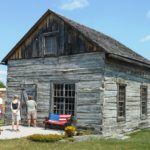
-
Log Cabin Post Office
-
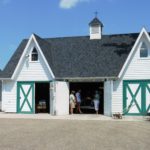
-
Carriage House
-
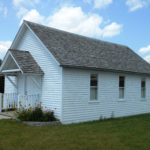
-
School House
The foundation of John E. Myra (1857-1939), a successful entrepreneur who was one of the largest landowners in the area at the time of his death, funded the construction of the Myra Museum, designed after the Campbell home. With no natural heirs, he earmarked the bulk of his estate for charitable purposes, including making over 4,000 acres of land available to local farmers.
Numerous stories of interest are found within the museum. 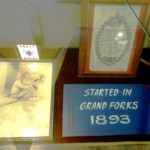 Grand Forks was the home of Cream of Wheat. The chief miller of a flour mill teetering on bankruptcy after the 1893 crash, devised a way to convert the leavings into the creamy product we know today. It took less than two years for the product to turn the tables, and today it’s manufactured in Minneapolis.
Grand Forks was the home of Cream of Wheat. The chief miller of a flour mill teetering on bankruptcy after the 1893 crash, devised a way to convert the leavings into the creamy product we know today. It took less than two years for the product to turn the tables, and today it’s manufactured in Minneapolis.

Campbell House
The aforementioned Thomas Campbell, Jr. (1882-1966), an avid student and athlete, received the first engineering degree granted by U-ND in 1904. He created the largest privately owned wheat farm in Hardin, MT in 1918, over 95,000 acres. He seeded 100 square miles of wheat annually. Campbell showed his patriotism by volunteering in both WW I and II, rising to the rank of Brigadier General and establishing a close friendship with Dwight David Eisenhower.
Coincident with the efforts of Tom Campbell were the pioneering efforts of Gust Hagert (1873-1962). Hagert emigrated from Sweden at age 16. In 1906, he married Bertha Sand (1880-1973), a schoolteacher whose family emigrated from Norway. The Hagerts had seven children. Thanks to Gust and Bertha and generations of their offspring, the homestead that he began and built into a major enterprise survives today as the Hagert Seed Company.
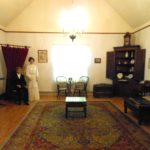
The Quiet Room
Bertha’s wedding dress had been turned into clothes for the children. As a gift to their parents on their 50th wedding anniversary, Dorothy and Blanche, their eldest children, had a replica made. Later, after the deaths of Gust and Bertha, the family created a memorial Quiet Room in the Myra Museum to honor them. Mannequins of their parents were custom-made in France duplicating their wedding picture pose. They now entice museum-goers to enjoy a few moments of tranquility in the Quiet Room.
Fred P. Nash journeyed from Vermont to the Dakota Territory to homestead. Eschewing the farm, he opened a confectionery store and invited his brothers, Willis and Edgar, to join him. The business went through the usual setbacks until 1889, when a boxcar of peaches was routed by mistake to Grand Forks. Seizing the day, the brothers mortgaged everything to buy the load and wholesale it throughout the area. Joined by 14 year old Harry Finch that same year, they eventually parlayed their skills to expand the business, and by the end of WW II, they also owned their own supermarkets. Nash Finch stock did an IPO in 1983 and today is a multinational corporation on the Fortune 500. Hey, there’s gold in them there peaches!
Perhaps the most unique of all was the Lustron Home. In 1947, the Lustron Corp. received a major grant from the federal government to produce a prefabricated home made out of enameled steel. It was virtually maintenance free, and it could be erected quickly to satisfy the needs of returning GI’s. Expecting to build 40,000 homes in the first two years, only 3,000 were built, and the company closed its doors in 1950. The house on the Historical Society property was one of about 20 in the area. It was flood-ravaged in 1997 but carefully restored and re-erected here. Between the house, the advertising and the artifacts displayed within, it is truly a déjà vu for those of us in our 7th or 8th decades. See examples below.
-

-
Lustron outside
-
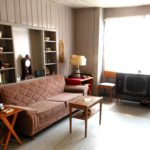
-
Living Room
-

-
Bedroom with blond furniture!
-

-
Kids’ room with erector set.
-
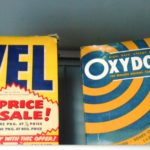
-
Remember these?
-
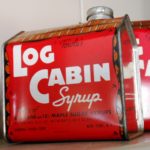
-
…and this?
This trip through the County Historical Society’s comprehensive exhibit ended our visit, with total satisfaction.



